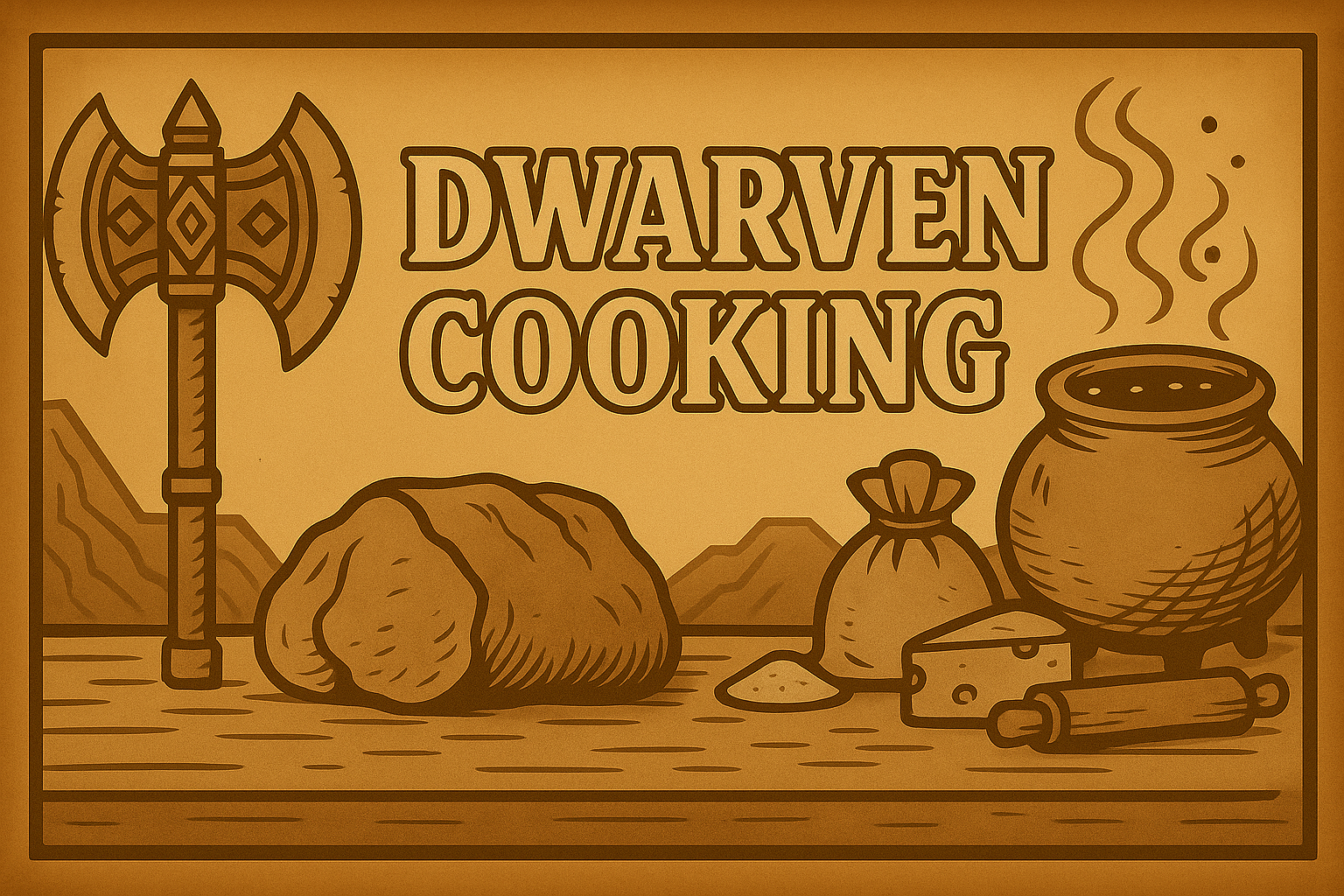Tunnelgrain Noodles
“Bend like a beam, bite like a pick.”
Tunnelgrain Noodles are long, flat strands of pasta made from hardy, underground-grown grains like deepbarley, stonewheat, and sometimes blended with lichen flour or fermented root starch for elasticity. Designed for durability and density, these noodles are chewy, toothsome, and nearly impossible to overcook — making them perfect for long stews, travel rations, or rowdy tavern fare.
Manufacturing process
“If you can tear it with your fingers, you didn’t knead it long enough.”
Instructions
- Form the Dough
In a stone bowl, mix flour, starch, and salt. Make a well in the center and add the eggs. Begin mixing with a fork or fingers until it forms a shaggy dough. - Knead with Conviction
Turn dough onto a lightly floured surface. Knead for 15 full minutes until the dough is smooth, dense, and elastic — almost like leather. Add water only if too dry to bind. - Rest and Resist Temptation
Wrap in oiled cloth or waxskin and rest for at least 1 hour (overnight if possible). This develops the chew and flavor. - Roll and Cut
Divide into workable sections. Roll out with a stone dowel or press into sheets about 3mm thick. Cut into long strips (tagliatelle-style) or thick stubby noodles (for soups). - Cook or Dry
Boil in salted water or broth for 5–8 minutes — they will remain chewy no matter what.
Or dry on hanging rods for storage up to 3 months in a dry tunnel pantry.
Significance
Cultural Notes
- Test of Courtship: In some holds, suitors must make noodles for the elder matron. If she breaks it with her fingers, the marriage is off.
- Tunnel Tradition: Hanging noodles above the kitchen is said to ward off cave spirits and encourage prosperity.
- Ration Use: Dried tunnelgrain is included in BRASC supply kits, often labeled: “Edible, throwable, durable.”
Item type
Consumable, Food / Drink
Raw materials & Components
Ingredients (Serves 4–5)
- 2 cups tunnelgrain flour (substitute: blend 1½ cups whole wheat + ½ cup rye or spelt)
- ½ cup lichen starch or arrowroot powder (for structure)
- 2 large stone-eggs (or 3 medium Chuck eggs)
- 1 tsp salt brine
- 1–2 tbsp cold mineral water, as needed
- Optional: 1 tsp ashpepper powder for spice or black tint
Serving Suggestions
- Tossed in Fungus Cream Sauce: Made with Cave-Hog Cheese and smoked mushroom
- Slurped in Fermented Broth: With ash-garlic, boiled stonecarp, and sour greens
- Stirred into Emberbroth: A fiery forgeworker’s stew



Comments